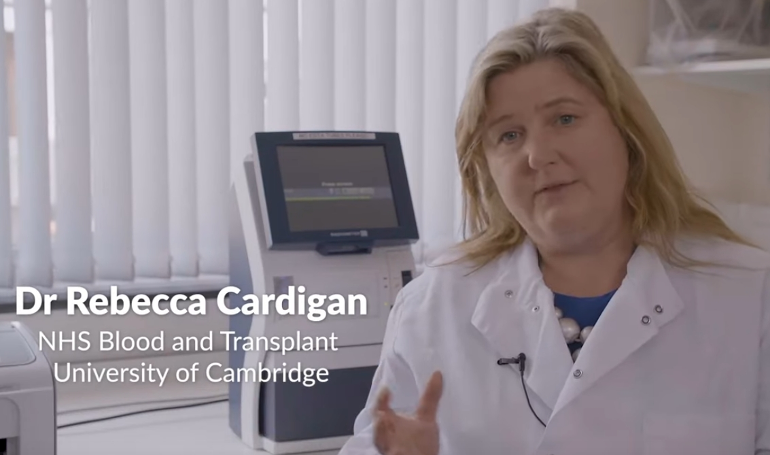One of the triggers for starting treatment for CLL is haemoglobin dropping below 100. The most common use of donated blood is transfusions for those undergoing cancer treatment. Even targeted therapies for CLL like acalabrutinib or venetoclax have an impact on bone marrow production. While there's a buffer of 20 before haemoglobin drops below 80 and red blood cell transfusions are required, some of us may still require transfusions to avoid organ damage from lack of oxygen. Rarely, our bone marrow struggles to resume production after treatment (billions of red blood cells are made per second). We then become transfusion dependent - a scary place to be.
In a welcome change from media reporting of medical breakthroughs, the following article is factual and realistic. The reported breakthrough is currently assessing whether laboratory cells last longer than those in the body as would be expected. Assuming the trials are successful, scaling up production will take years. While the article surprisingly doesn't mention cancer, just giving the example of sickle cell anaemia, transfusion dependent people with CLL should certainly also qualify. Now we need similar research success for platelets and white blood cells!
Snips from an article about the RESTORE trial, (where) the research is a joint effort by NHS Blood and Transplant, University of Bristol, University of Cambridge and others.
:-
In a world-first clinical trial, red blood cells that were grown in a laboratory have been transfused into two people.
It’s a major step toward lab-grown cells being used in blood transfusions – instead of blood from donors.
:
How long do red cells live for?
Red blood cells are viable for about four months and then need to be replaced.
Whole blood taken from a donor contains a mix of young and old red blood cells, whereas the lab-grown blood is all freshly made so should last the full four months.
The UK researchers expect these fresh cells to perform better than a regular transfusion.
Plus, if manufactured cells last longer in the body, it’s thought that patients with blood conditions won’t need transfusions as often.
The big benefit is a reduction in iron overload from frequent blood transfusions that can lead to scarring of the liver and other complications.
:
Two people were transfused with a small amount of lab-grown cells, about 5ml to10ml – or one to two teaspoons.
According to a statement from the University of Cambridge: “They were closely monitored and no untoward side effects were reported. They are well and healthy.
thenewdaily.com.au/life/wel...
Two minute video where Professor Cedric Ghevaert and Dr Rebecca Cardigan (shown) of NHS Blood and Transplant University of Cambridge, UK explain the process and the development status of this breakthrough.
youtube.com/watch?v=o0IM-Fc...
Dr Farrukh Shah, Medical Director of Transfusion for NHS Blood and Transplant, said: “Patients who need regular or intermittent blood transfusions may [as a] result develop antibodies against minor blood groups, which makes it harder to find donor blood which can be transfused without the risk of a potentially life-threatening reaction.
“This world-leading research lays the groundwork for the manufacture of red blood cells that can safely be used to transfuse people with disorders like sickle cell.
“The need for normal blood donations to provide the vast majority of blood will remain. But the potential for this work to benefit hard to transfuse patients is very significant.”
Do our bodies really make billions of red blood cells per second?
(I'm going to round figures to make the calculations easier.)
From our blood test reports, we see we have around 5x10^12 (trillion) red blood cells per litre. We also have around 5 litres of blood in our bodies. So we have:
5 x 5,000,000,000,000 or 25 x 10^12 red blood cells in our bodies - well until CLL has its way 
Red blood cells last around 4 months or 120 days. Let's use 100 days.
So we need to make a hundredth of the above quantity each day to replace worn out red blood cells.
So 25x10^12/100 works out at 25x10^10 or 250,000,000,000 red blood cells per day. That's roughly 10,000,000,000 red blood cells per hour, or about 3 billion per second. Makes you realise how under appreciative we are of our bone marrow!
This is an open (unlocked) post, so those diagnosed with CLL can find our community.
Neil
